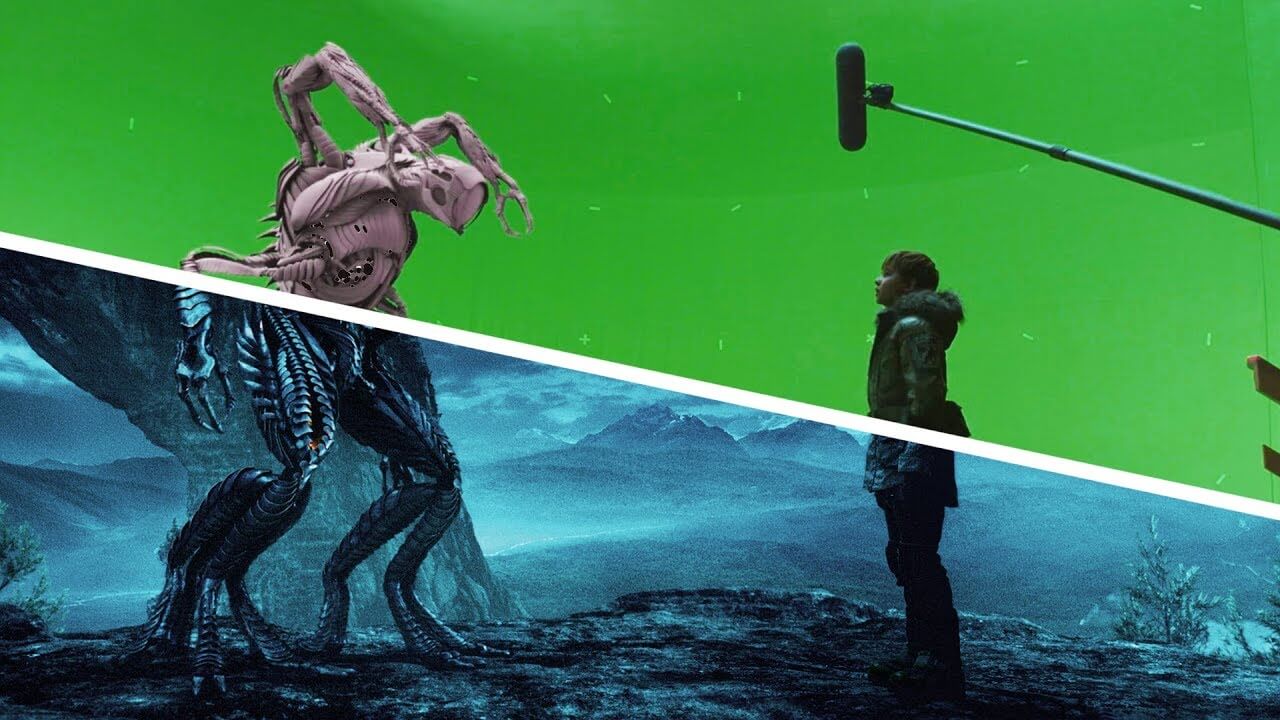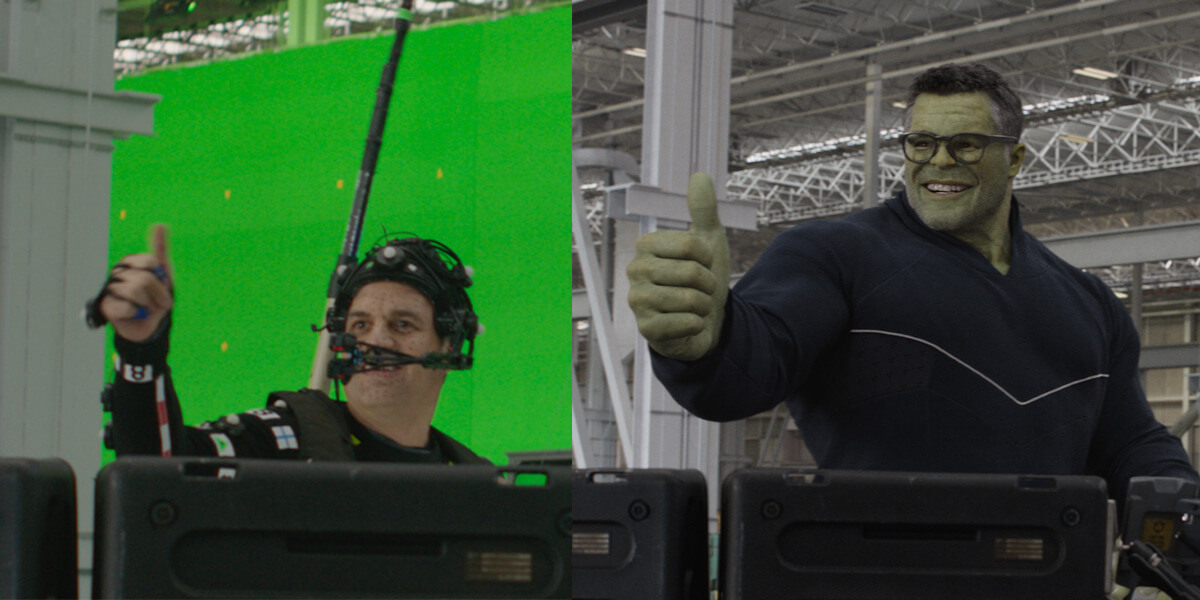When visual effects (VFX) workers at Disney filed for unionization under the International Alliance of Theatrical Stage Employees (IATSE) in late August, many observers said it was the beginning of a potential momentum shift in the industry.
Indeed, that the news came amid the ongoing Hollywood writers and actors strikes — and as Marvel’s VFX workers took steps to hold a similar successful unionization vote — seemed to increase the intensity of what the LA Times dubbed the “hot labor summer” of 2023.
The Disney-owned Marvel vote was particularly noteworthy: It was the first time a group of solely VFX workers had voted to unionize in an official vote held by the U.S. National Labor Relations Board.
But why are VFX artists attempting to unionize in the first place? What does that say about the current state of the VFX industry? And what does the current labor situation mean for VFX quality going forward?
We’ll answer all these questions, and more, below. Let’s get at it.
Table of Contents
What’s the State of the VFX Industry?
The first sign of trouble in the VFX industry occurred a decade ago, when VFX shop Rhythm & Hues filed for bankruptcy the same month it accepted the Oscar for Best Visual Effects for its work on Life of Pi.
But Rhythm & Hues wasn’t the only VFX company on shaky financial ground:
More than 20 other firms closed between 2003 and 2013, partly due to the fierce level of competition among VFX firms and relatively small number of major customers.
The Power of the Studios
Most major studios don’t have nearly enough VFX capability to handle all their projects, so contracting VFX work to third-party companies is the norm. For studios working on multiple VFX-heavy TV shows and films, that often means outsourcing VFX work to multiple studios at the same time.
That can be a blessing for VFX houses, but also a curse: Big-name studios with multiple simultaneous VFX projects means these studios wield an outsized amount of power when it comes to contract talks.

Source: GelaroGrace Studio
Adding to the pressure is the sheer amount of work in the VFX pipeline for both TV and film today. Many in the community say there’s too much work and too few VFX artists. While in a pure economic sense that should be a boon for VFX companies, many say such demand leads to inhumanely long hours and burnout among the best and most experienced artists.
Fixed Cost Contracts
Another major issue identified by artists and companies across the industry is that many studios only offer fixed cost contracts to VFX houses. These contracts can quickly become financial black holes if the production team changes its mind about the film’s look and feel multiple times (which happens in nearly every project), often requiring VFX artists to work extra time for no additional money.
At the same time, the offshoring of some VFX elements has lowered the fees stateside VFX facilities can charge.
These conditions — and others — are why VFX veteran and Digital Domain co-founder Scott Ross predicted years ago that VFX houses would need to adapt or die.
“Studios continue to ask for lower prices, higher quality, and more work in shorter periods of time,” he said back in 2011.
The unionization votes called for “fair compensation for all hours worked, adequate health care, retirement benefits, and more generally, the same rights and protections afforded to their unionized coworkers who are already represented by IATSE,” according to The Hollywood Reporter.
Ross, however, also had a warning for those keen to unionize. “The problem is we are looking at competing in places where there are no unions,” he said.
“But if (a union) increases the cost of doing business and increases cost to the facilities, who is going to bear that cost? I will tell you that the motion picture studios, in my opinion, will not. They are trying to maximize profitability.”
A National VFX Union
Almost all current VFX jobs — which include VFX supervisors, data wranglers, witness camera operators, and other positions — are non-union. IATSE wants to kickstart a new national VFX local that includes workers employed by studios, production firms, and VFX houses.
Notably, the Disney and Marvel workers who voted to unionize indicated it would be through IATSE.
These workers would labor under the Basic Agreement contract used by entertainment workers in 13 locals, including the International Cinematographers Guild (Local 600) and Motion Picture Editors Guild (Local 700).
Why Are VFX Artists Unionizing?
However this ultimately plays out, VFX workers on both the client side (those who work for production companies) and the vendor side (who work for VFX shops) are undoubtedly pushing for change.
A recent IATSE survey of VFX workers found that vendor-side workers seem to have slightly better benefits than those who work for major studios. But the survey also found that many VFX workers barely make minimum wage after unpaid overtime is included.
While not an exhaustive list, here’s a closer look at some of the most contentious issues facing the VFX industry.
1. Health and Retirement Benefits
The IATSE survey indicated that only 12% of client-side workers have a portable health insurance plan. Another 45% only received healthcare coverage for the duration of their project. Altogether, 43% of VFX worker respondents didn’t have any health insurance at all.
And while a quarter of vendor-side survey respondents indicated they have portable healthcare plans and nearly half said they have employer-contributed retirement plans, only 15% of client-side VFX artists indicated they have a similar retirement plan.
2. Pay, Overtime, and Tight Deadlines
The VFX industry is well-known for underpaying and overworking its people, and this has only gotten worse as the amount of VFX work for film and TV has gone through the roof. Major studios often own streaming services hungry for content, dialing up the pressure even more. It all adds up to more work than the industry can handle — which usually means a lot of unpaid overtime. The IATSE survey also cited a lack of breaks and rest periods.
Around 70% of VFX workers have reported working uncompensated overtime, according to another report, while 75% said they’ve been forced to work through meal breaks and rest periods without compensation to meet deadlines. To make matters worse, one major VFX company recently announced pay cuts of 25%.
IATSE members in other areas of the M&E industry, meanwhile, benefit from contract clauses that stipulate a 10-hour break between shifts and guaranteed 54 hours of rest over the weekend.
3. Artificial Intelligence
Something tells us this year’s labor unrest is just the tip of a very large AI iceberg. AI continues to make many workers profoundly nervous about their jobs, and has been a major sticking point in the SAG-AFTRA and Writers Guild strikes. VFX artists are no exception in this regard.

Source: Befores & Afters
“(It’s) a legitimate worry,” says VFX supervisor Bilali Mack in Wired. “Because there’s a saying in visual effects… the first 90% takes 10% of your time, the last 10% takes 90%. They’re gonna spit it out, it’s gonna be a piece of crap. Then they’re just gonna be like, ‘We just want it to look perfect and feature film quality.’” The implication is that a VFX company will then need to work on the 90% while being paid for 10%.
It’s also worth noting, however, that the targeted use of AI by VFX studios could help artists scale themselves more efficiently to better meet large contracts on tight deadlines, which could in turn help cut down on long hours and unpaid overtime.
4. Lack of Standardization
A lack of standards when it comes to software tools, production formats, production expectations, and other elements often adds extra stress (and hours) to every VFX engagement.
“Lack of standardization across our industry means these workers must become experts essentially overnight,” says motion graphics and 3D animation expert (and IATSE representative) Mark Patch.
Additionally, the sheer volume of work and relative lack of experienced VFX artists means experienced workers must often take even more time to train their neophyte colleagues.
What Does This Mean For VFX Quality?
Some in the M&E world have speculated the unrelenting pressure for more VFX work has started to show — and not just in terms of the recent unionization votes. Some have even begun wondering if difficult working conditions have contributed to recent fan dissatisfaction with the effects quality of some recent feature films.
After all, even though digital tools such as MASV large file transfer can help scale VFX houses and artists through fast, easy, and error-free transfer of terabytes’ worth of files, artists can only accomplish so much in 24 hours.
“VFX artists are forced to work relentless hours, overtime almost every day, including weekends,” said VFX artist Zach Mulligan, who worked on The Flash, in Bold Entrance. “If the VFX companies aren’t meeting the unrealistic expectations… they risk losing out on future contracts, and there’s only so many studios that are making superhero movies anymore.”
Other VFX artists have admitted to taking process “shortcuts” to meet tight deadlines that ultimately affected the quality of effects in their films.
Interestingly, the same studio whose VFX artists recently voted to unionize — Marvel — has taken some of the biggest hits about its recent VFX work. Big-ticket films such as Ant-Man and the Wasp: Quantumania, Thor: Love and Thunder, She-Hulk: Attorney at Law, and Secret Invasion have all faced criticism.

SOURCE: Entertainment Weekly
“Several of the same effects houses worked on both films, creating competition for the most highly skilled VFX workers,” explained Variety, adding that some VFX artists worked up to 80 hours a week for months on end.
What’s Next For The VFX Industry?
It’s uncertain where the VFX industry goes from here, but recent quotes from some VFX artists show that the status quo is likely untenable over the long run.
“This was like a second wave of what happened with James Cameron on Titanic, where the compositors were basically taking naps under their desks, because there wasn’t enough time between shifts to go back home, then come back,” one tech told Vulture about their work on the most recent Ant-Man film.
“Turnaround times don’t apply to us, protected hours don’t apply to us, and pay equity doesn’t apply to us,” added VFX coordinator Bella Huffman in Variety, while another added that she’s had many VFX jobs where she was expected to work 10 hours straight without a break.
“When I made the transition (from animation) into visual effects, I had zero benefits offered to me. Most visual effects workers I know can barely survive five years in the industry,” said Maggie Kraisamutr, also in Variety.
“It definitely feels more like a conveyor belt nowadays,” added another VFX staffer. “It really becomes like the McDonald’s of content.”
There’s clearly growing concern in the industry among both VFX artists and fans alike. But there’s also hope that recent progress made by The Animation Guild and other organizations, along with the SAG-AFTRA strike and recent unionization votes, will help propel the improvement of working conditions in the industry.
After all, other M&E workers represented by unions don’t have nearly the same amount nor severity of complaint. And the fact that so many studios require high-end VFX work right now gives VFX companies and their artists inherent power they can leverage. The only question remaining is how they’ll use it.
File Transfer for VFX Workflows
Automate your VFX pull/push process with MASV for easy, fast transfer of shots, plates, and finished files.